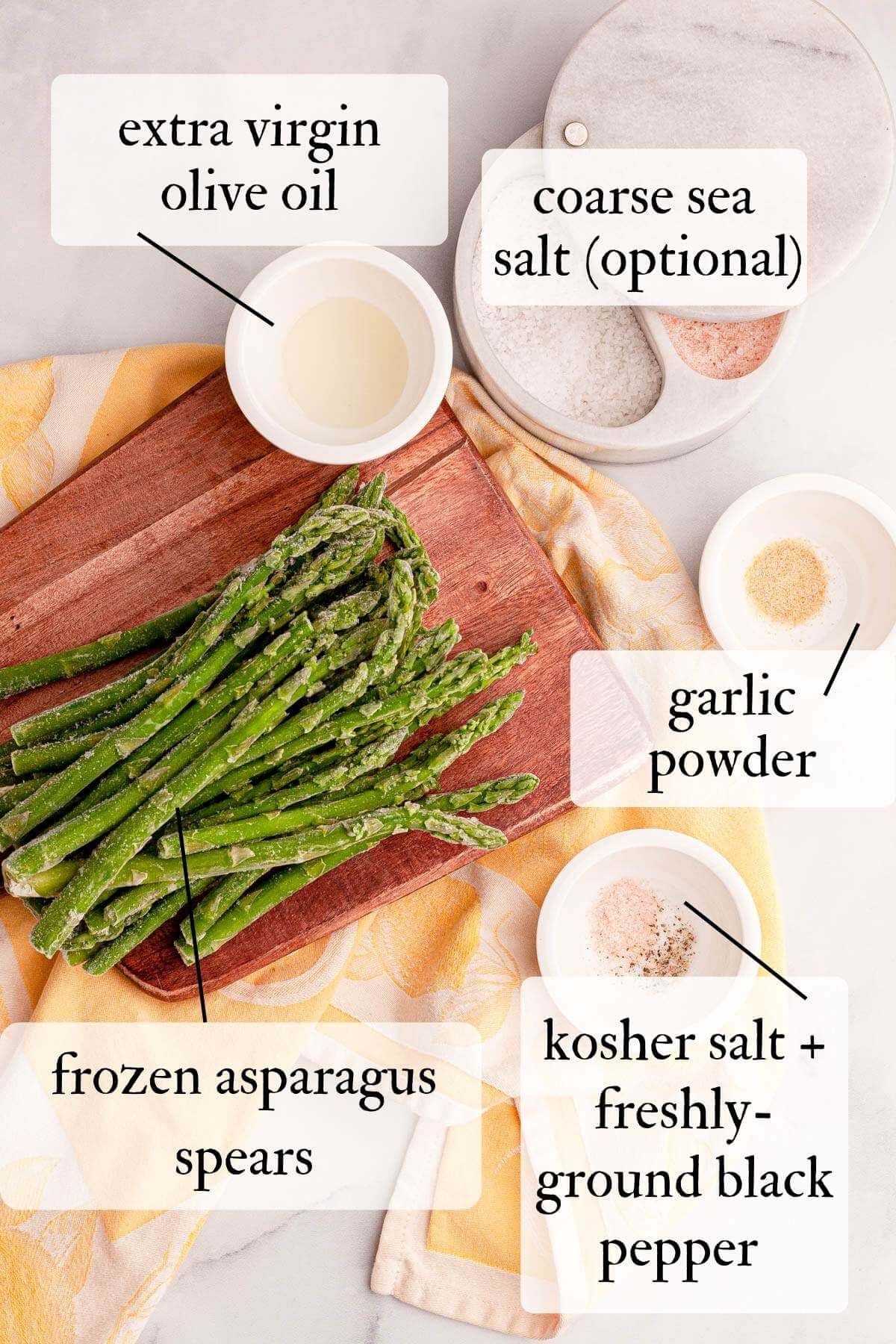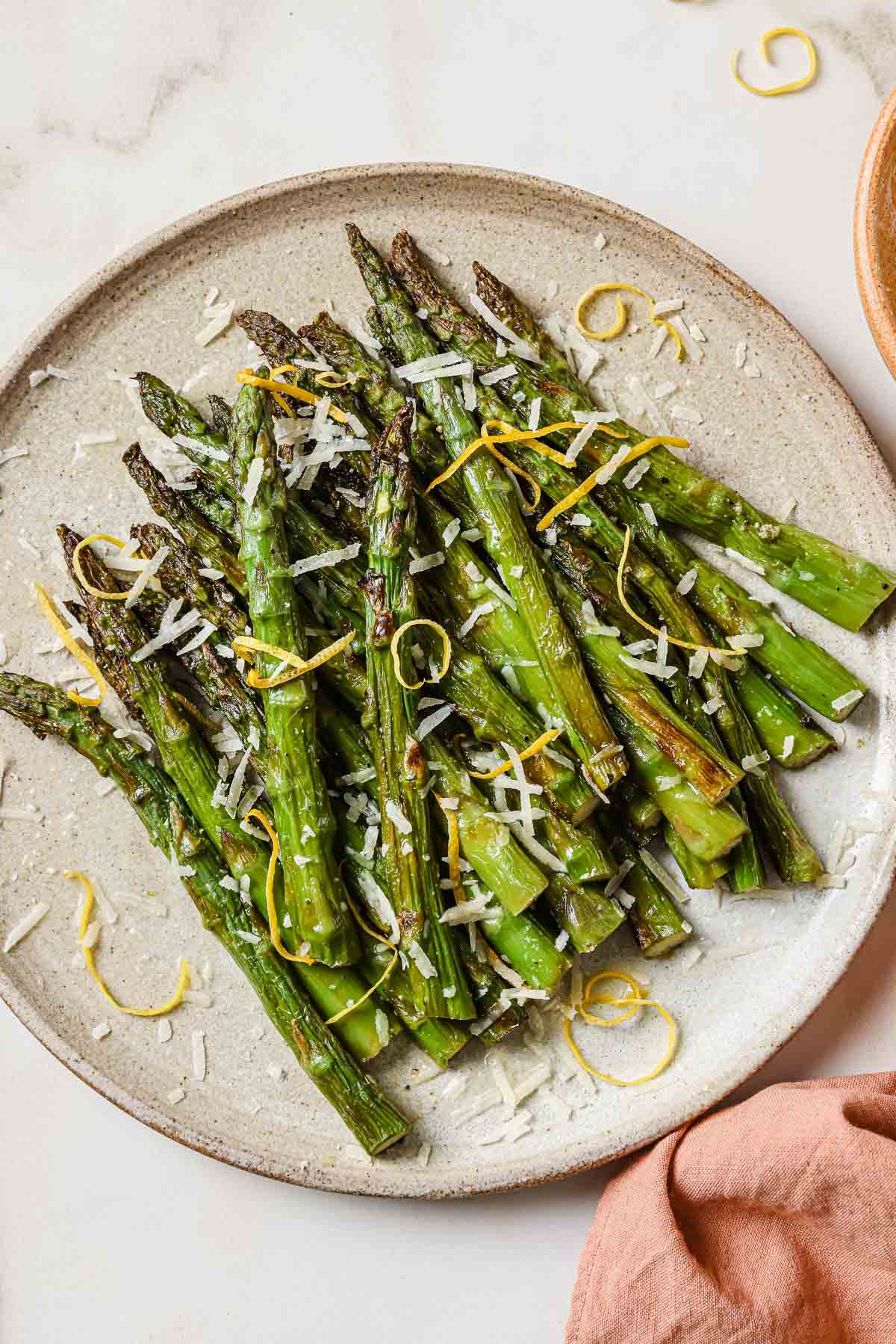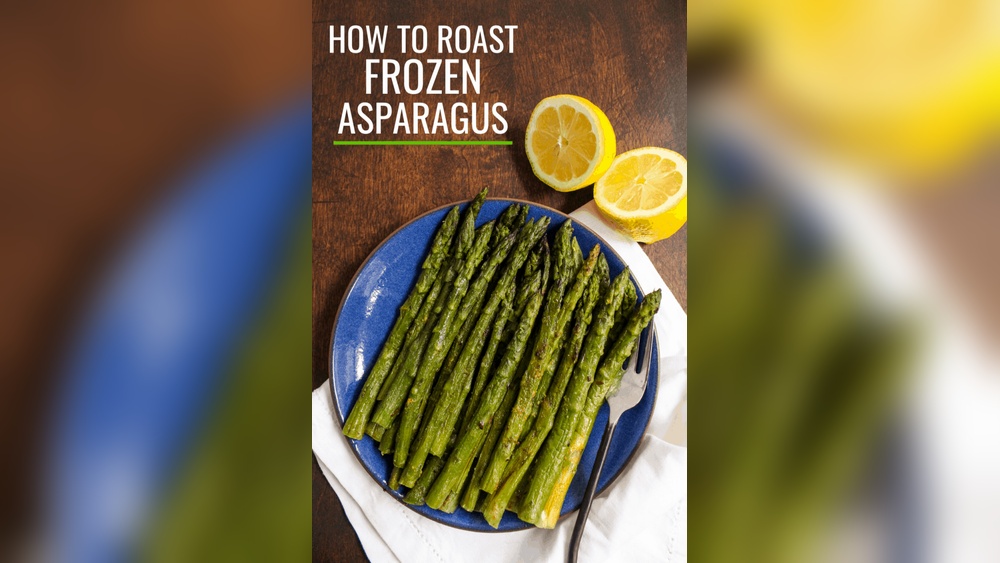Are you wondering how to cook frozen asparagus without ending up with a soggy mess? You’re not alone.
Frozen asparagus is a convenient, healthy option, but getting it just right can be tricky. The good news is, with the right techniques, you can enjoy tender, flavorful asparagus straight from your freezer—no thawing needed. In this guide, you’ll discover simple, foolproof methods like air frying, roasting, and pan-frying that bring out the best in frozen asparagus.
Ready to turn this humble veggie into a delicious side dish? Keep reading to master the art of cooking frozen asparagus perfectly every time.

Cooking Frozen Asparagus
Roasting frozen asparagus works well by spreading the spears on a baking sheet. Toss them in olive oil, salt, and pepper for flavor. Roast at 400°F (200°C) for 15-20 minutes until tender and slightly crisp. Stir halfway through for even cooking. This method keeps the asparagus crispy and tasty without thawing.
Air frying is fast and simple. Coat asparagus with olive oil and seasonings. Place in the air fryer basket in a single layer. Cook at 400°F for 10-12 minutes. Shake the basket halfway through to cook evenly. This method gives a nice crisp texture.
Pan-frying frozen asparagus requires medium heat and a bit of oil. Add asparagus directly to the hot pan. Stir often for about 8-10 minutes. Season with garlic powder, salt, and pepper. This way produces a soft inside with a slight crisp outside.
Preparing Frozen Asparagus
Frozen asparagus cooks best without thawing first. Cooking it straight from the freezer keeps it crisp and fresh. Toss the asparagus with olive oil to help the spices stick and to add flavor. Use simple seasonings like salt, pepper, garlic powder, or red pepper flakes for a little kick.
Using oil not only adds taste but also helps the asparagus cook evenly. Spices bring out the natural flavor and make it more enjoyable. Avoid thawing because it can make asparagus soft and soggy. Cooking frozen asparagus directly keeps the texture nice and firm.
Avoiding Mushy Texture
Freezing asparagus changes its cell structure. Ice crystals form inside, breaking down the fibers. This causes a softer, mushy texture after cooking. Keeping the texture firm requires careful cooking.
Best cooking temperatures range from medium to medium-high heat. Too high heat cooks the outside too fast, leaving the inside mushy. Too low heat makes asparagus soggy and limp.
Cooking frozen asparagus directly from the freezer helps keep it crisp. Do not thaw first; thawing releases water and softens the spears. Toss frozen asparagus with a little oil and seasoning before cooking. This method seals in flavor and texture.

Serving Ideas
Citrus such as lemon or orange zest adds a fresh, bright flavor to asparagus. The acidity helps balance the natural earthiness of the vegetable, making each bite lively and refreshing.
Sprinkle red pepper flakes lightly for a gentle heat kick. This spice gives a warm, slightly spicy note that contrasts well with asparagus’s mild taste.
Garlic and cheese make a rich and savory combo. Sauté minced garlic in olive oil before tossing the asparagus in it. Then, finish with a sprinkle of Parmesan or your favorite cheese for a creamy, flavorful touch.
Storage And Handling
Freeze asparagus quickly after washing and trimming. Blanch for 2-3 minutes in boiling water to keep texture and color.
Cool asparagus immediately in ice water to stop cooking. Dry well before freezing to prevent ice crystals.
| Storage Tips | Details |
|---|---|
| Freezing | Use airtight bags or containers to avoid freezer burn. |
| Labeling | Write the date on the package for freshness tracking. |
| Freezer Temperature | Keep below 0°F (-18°C) to maintain quality. |
Reheat cooked asparagus gently to avoid sogginess. Use a microwave or pan on low heat.
Adding a little olive oil or butter helps keep asparagus moist and tasty during reheating.

Frequently Asked Questions
Can Asparagus Be Cooked From Frozen?
Yes, cook frozen asparagus directly without thawing. Toss with oil and seasonings, then roast, air fry, or pan-fry until tender and crisp.
Does Asparagus Get Mushy When Frozen?
Asparagus can become mushy if frozen without blanching. Blanch before freezing to maintain firmness and texture. Cook frozen asparagus directly for best results.
Can You Eat Asparagus After It Has Been Frozen?
Yes, you can eat asparagus after freezing. Cook it directly from frozen by roasting, air frying, or pan-frying for best texture.
How Long Do I Air Fry Frozen Asparagus?
Air fry frozen asparagus at 400°F (200°C) for 10-15 minutes. Toss with oil and seasonings for best results. Check tenderness midway.
Conclusion
Cooking frozen asparagus is simple and quick with these easy methods. Roasting, air frying, or pan-frying keeps it tasty and crisp. No need to thaw before cooking saves time and effort. Use your favorite seasonings to add flavor and make it your own.
Enjoy this healthy vegetable as a side or in recipes any day. Frozen asparagus can be a convenient, delicious addition to meals. Try these tips and enjoy fresh-tasting asparagus anytime.

